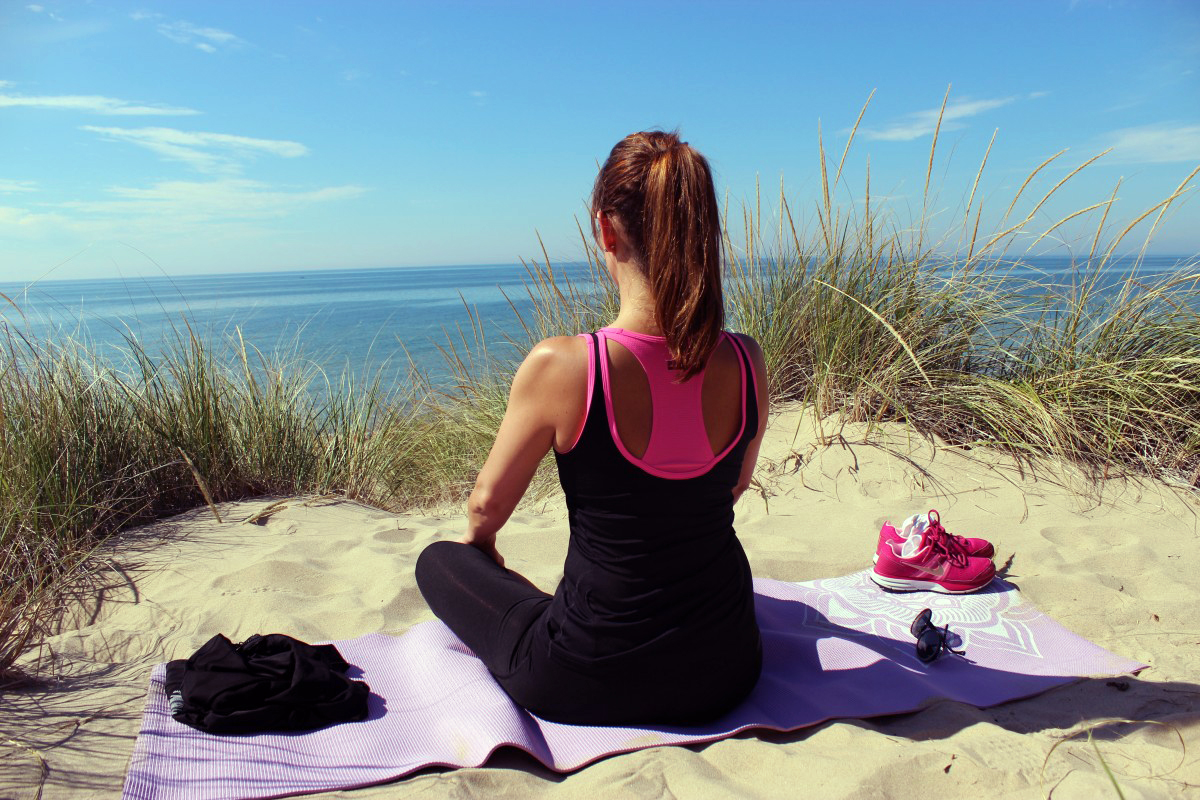As I’ve written and talked about, meditation is most powerful when practiced daily. For most of us, its benefits fade away during sleep, so we must reset each day with another session, preferably in the morning.
But doing anything other than fulfilling our basic needs—eating, sleeping, drinking water—each and every single day is hard work. And the last thing we need in this society is more work that we don’t get paid for.
So, if your 2019 resolutions and goals include meditating more—or finally meditating for the first time—I’ve got some tips.
Start with an intention, not a goal. My practice began with the intention to sit every day, no matter how little. Some days, I sat 20 minutes in the morning; others, I could only manage five minutes just before getting into bed at night. A few weeks in, I missed a day. But because I had set an intention, I was a little easier on myself, which allowed me to begin again the next day without the weight of feeling like a failure.
If you’re like me—i.e., a human being—the idea of perfection is a fantasy that allows you give up at the first sign of failure. As the saying goes, perfect is the enemy of good.
Meditation is simply sitting and observing, not losing 50 pounds or making a million dollars. It cuts against the direction that our society flows in—it’s about accepting and letting go, not judging and holding on. So, give yourself slack and take your time.
Eventually, settle into a routine. Within a few weeks or months, you’ll find a sweet spot in terms of length, whether it’s 10, 20, or 30 minutes a day. You’ll also get a feel for what time of day gives you the most bang for your buck.
Routine is crucial to developing any habit. It greases the wheels, so to speak, by saving mental energy that would otherwise go towards making decisions—when should I sit today, where, how long?
At the moment, I sit 30 minutes every morning after making my bed and stretching—even when I’m sick or traveling—and most days another 20 minutes in the afternoon. I’ve followed this routine long enough that my day is noticeably more stressful and unfocused if I skip my morning sit. Intention has morphed into discipline, a must-do.
Don’t go it alone. Meditation groups in the U.S. have a long way to go to be more accessible, particularly to people of color, LGBTQ folks, and working people. But when you become bored of your routine—which you will—seeing others sit and go headfirst into the unknown of the present moment can inspire your individual practice.
There are groups in monasteries, centers, and living rooms in most cities and regions, most of which sustain themselves on volunteer effort and donations. Find a public event to drop in on.
Often, you can check out a guided meditation and hear a talk from a teacher without having to say a word to anyone. Or if you want to talk to others, most people love to talk about their practice with other meditators.
If you live in a city, try various lineages and orientations to the practice to see what resonates. Lineages common in the U.S. include: Vipassana (Insight meditation), Zen, and various Tibetan Buddhism orientations, like Shambhala. Many are quite secular and require little commitment, if any.
If you can’t find a group in your area, use a meditation app like Dharma Seed or Headspace to listen to guided meditations. It’s totally fine to lean on guided meditations, especially when you first start daily practice. Find a quiet place and let the guidance play from your phone—though listening with headphones is fine in a pinch. I sat with my phone in my shirt pocket playing Tara Brach’s guided meditations for at least the first six months. The app Insight Timer is great for keeping time once you’re sitting on your own.
Good luck! As always, shoot me an email at jeremy@jeremymohler.blog if you’re struggling.
Ready to get serious about meditation?
Sign up for my weekly email on meditation and bringing mindfulness to work, relationships, and politics.
Listen to the podcast version with more content
My podcast, Meditation for the Masses, takes meditation out of faraway monasteries, expensive retreat centers, and corporate America, and brings it to the things that matter most to people who work for a living—work, relationships, and politics. It’s mindfulness for the hustle and the class struggle.
Podcast: Play in new window | Download
Subscribe: Apple Podcasts | RSS | More


